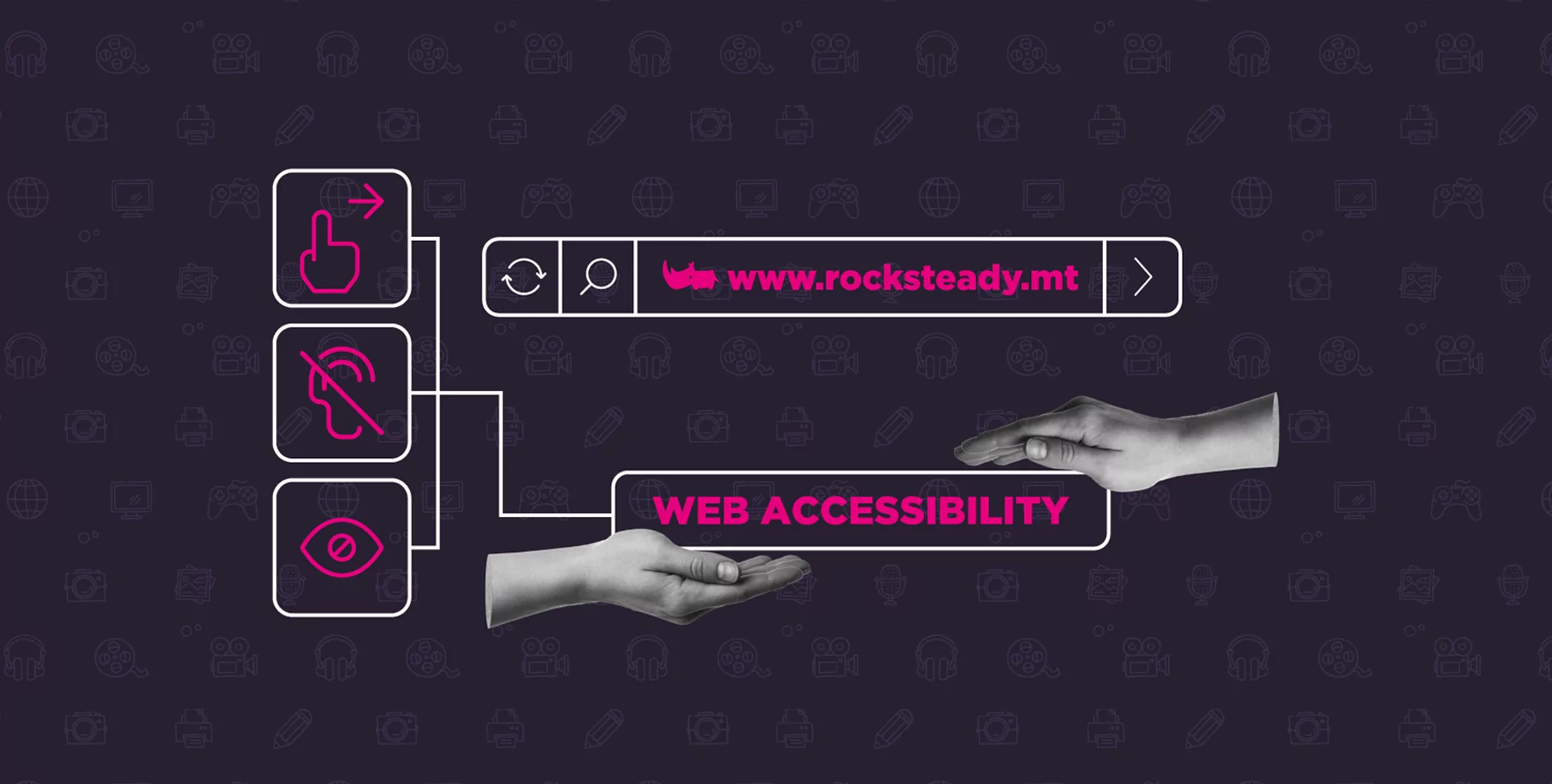As we acknowledged World Braille Day on January 4th, 2024, it serves as a poignant reminder for businesses worldwide to reevaluate their commitment to accessibility and independence for employees who are blind or visually impaired.
Inclusive website development that accommodates blind or visually impaired users
Beyond acknowledging this day, it’s crucial for employers and colleagues to actively support individuals with visual impairments in the workplace, while also understanding the legal requisites that mandate such support.
Rocksteady Digital is committed to creating inclusive website development that accommodates blind or visually impaired users and involves adhering to certain best practices for accessibility.
“Enhancing web accessibility is a continuous endeavour aimed at optimizing the user experience we deliver.”
– Ben Pace Lehner, Managing Director, Rocksteady Digital Agency Limited

Creating an inclusive website that accommodates blind or visually impaired employees involves adhering to certain best practices for accessibility.
Here are some crucial steps and best practices for ensuring website support in the workplace for visually impaired individuals:
- Adhere to Accessibility Guidelines: Follow established web accessibility standards, such as the Web Content Accessibility Guidelines (WCAG) 2.1 or 2.2. These guidelines provide comprehensive instructions on making web content accessible to users with various disabilities, including those with visual impairments.
- Use Semantic HTML: Utilize semantic HTML markup to structure the content properly. This helps screen readers interpret and convey the information accurately to visually impaired users.
- Alt Text for Images: Provide descriptive alternative text (alt text) for all images on the website. This text should convey the essential information the image intends to convey, aiding screen readers in describing visuals to users who cannot see them.
- Keyboard Accessibility: Ensure that all website functionalities and interactive elements are operable using only a keyboard. This assists users who rely on keyboard navigation or alternative input devices.
- Clear and Consistent Navigation: Maintain a clear and consistent navigation structure throughout the website. Properly labelled links, headings, and navigation menus enable visually impaired users to navigate the site efficiently.
- Text Readability and Contrast: Use clear and readable fonts with appropriate contrast ratios between text and background colours. This ensures legibility for users with low vision.
- Video and Audio Content: Provide captions for videos and transcripts for audio content to make multimedia elements accessible. This assists visually impaired users who may rely on screen readers or prefer text-based content.
- ARIA Landmarks: Implement ARIA (Accessible Rich Internet Applications) landmarks to define regions of a web page. These landmarks aid screen readers in understanding the website’s structure and navigating content more effectively.
- Forms Accessibility: Ensure that all form fields have clear labels and instructions. Additionally, use proper form markup to assist screen readers in identifying and completing form fields accurately.
- User Testing and Feedback: Regularly conduct usability testing with visually impaired individuals to gather feedback and improve accessibility. Incorporate user insights into ongoing website enhancements.
- BONUS: Evaluate your website’s performance using open-source automated tools like Lighthouse to enhance web page quality. Lighthouse conducts distinct accessibility audits and assigns scores to each, culminating in an overall Accessibility score. This tool also encompasses assessments for performance, progressive web apps, SEO, and other crucial aspects.
By implementing these best practices, organizations can create a more inclusive and accessible online environment for blind or visually impaired employees. This approach fosters equal access to information and services, promoting a more equitable workplace for all individuals, regardless of their visual abilities.
World Braille Day: Ensuring Workplace Support for Blind or Visually Impaired Employees
On World Braille Day, let’s shine a light on the importance of promoting accessibility and independence for our blind and visually impaired colleagues. Ensuring equal opportunities in the workplace is a shared responsibility.
